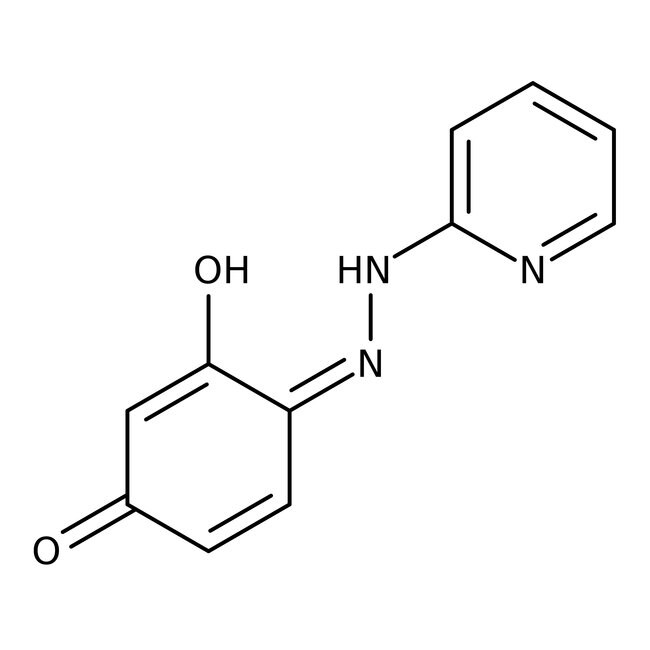Search Thermo Fisher Scientific
4-(2-Pyridylazo)resorcin, 99 %, Thermo Scientific Chemicals



4-(2-Pyridylazo)resorcin, 99 %, Thermo Scientific Chemicals
Chemikalien-Kennzeichnungen
Spezifikationen
Beschreibung
This Thermo Scientific Chemicals brand product was originally part of the Alfa Aesar product portfolio. Some documentation and label information may refer to the legacy brand. The original Alfa Aesar product / item code or SKU reference has not changed as a part of the brand transition to Thermo Scientific Chemicals.
4-(2-Pyridyllazo)resorcinol wird in Studien zur Zinkfreisetzung von Escherichia coli Aspartat-Transcarbamoylase verwendet. Es wird bei der Wolkenpunkt-Extraktion von Kupfer, Zink, Cadmium und Nickel in Wasserproben verwendet. Es wird bei der Chelattitration von Aluminium, Quecksilber, Blei und Nickel verwendet. Es wird als Reagenz in der kolorimetrischen Analyse von Gold, Kobalt, Chrom und Eisen verwendet.
Löslichkeit
Löslich in Wasser (teilweise) und Ethanol (schwach). Unlöslich in Ether und Lösungsmitteln mit niedriger Polarität.
Hinweise
Nicht kompatibel mit Oxidationsmitteln. Kühl lagern. Behälter an einem trockenen und gut belüfteten Ort dicht verschlossen halten. Von Oxidationsmitteln entfernt aufbewahren
Abbildungen
Dokumente und Downloads
Zertifikate
Häufig gestellte Fragen (FAQ)
Zitierungen und Referenzen
Sicherheit und Handhabung
Classification of the substance or mixture
CLP classification - Regulation(EC) No 1272/2008
Label Elements
Signal Word
Warning
Hazard Statements
H315 - Causes skin irritation
H319 - Causes serious eye irritation
H335 - May cause respiratory irritation
Precautionary Statements
P280 - Wear protective gloves/protective clothing/eye protection/face protection
P302 + P352 - IF ON SKIN: Wash with plenty of soap and water
P304 + P340 - IF INHALED: Remove person to fresh air and keep comfortable for breathing
P312 - Call a POISON CENTER or doctor if you feel unwell
P332 + P313 - If skin irritation occurs: Get medical advice/attention
P337 + P313 - If eye irritation persists: Get medical advice/attention